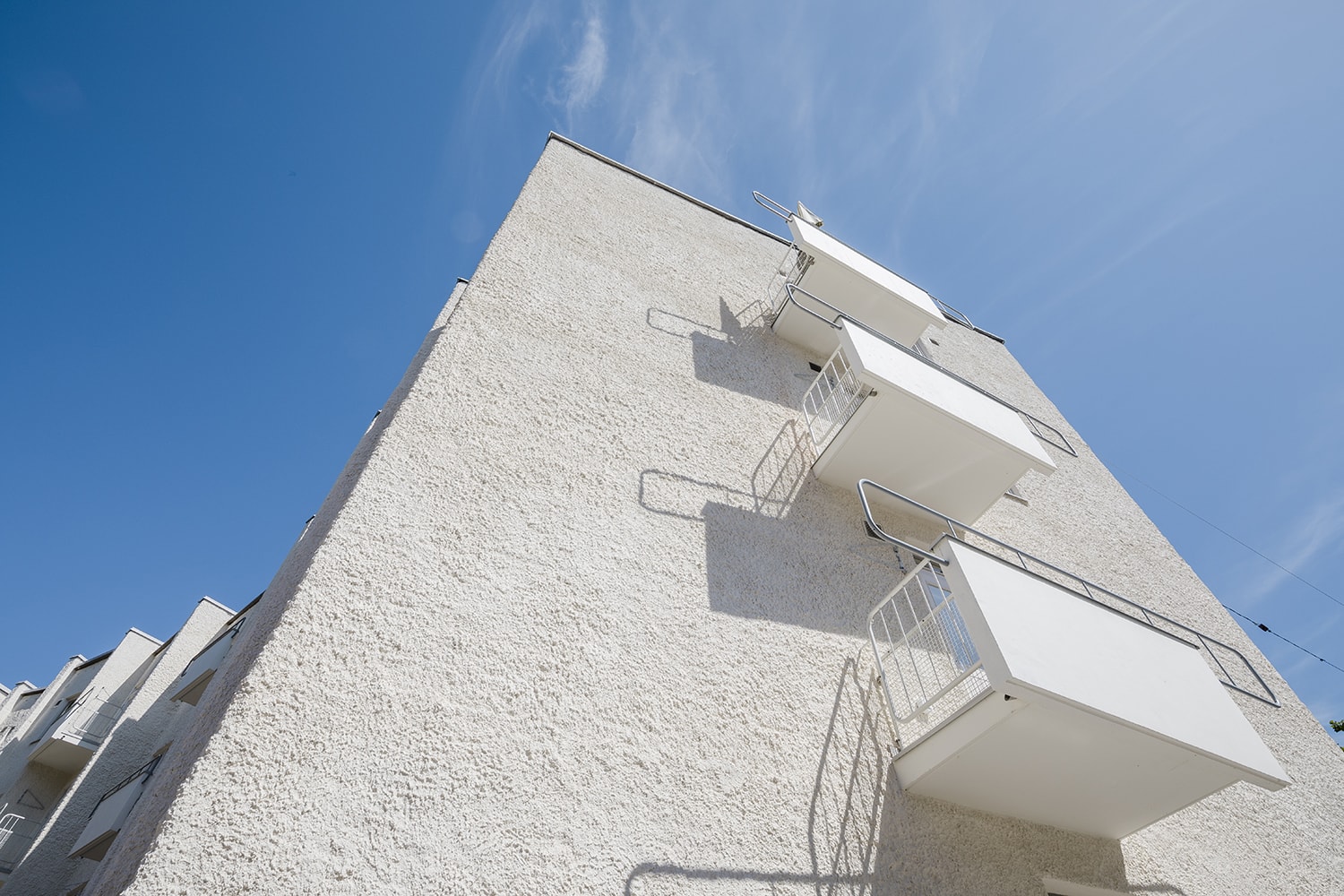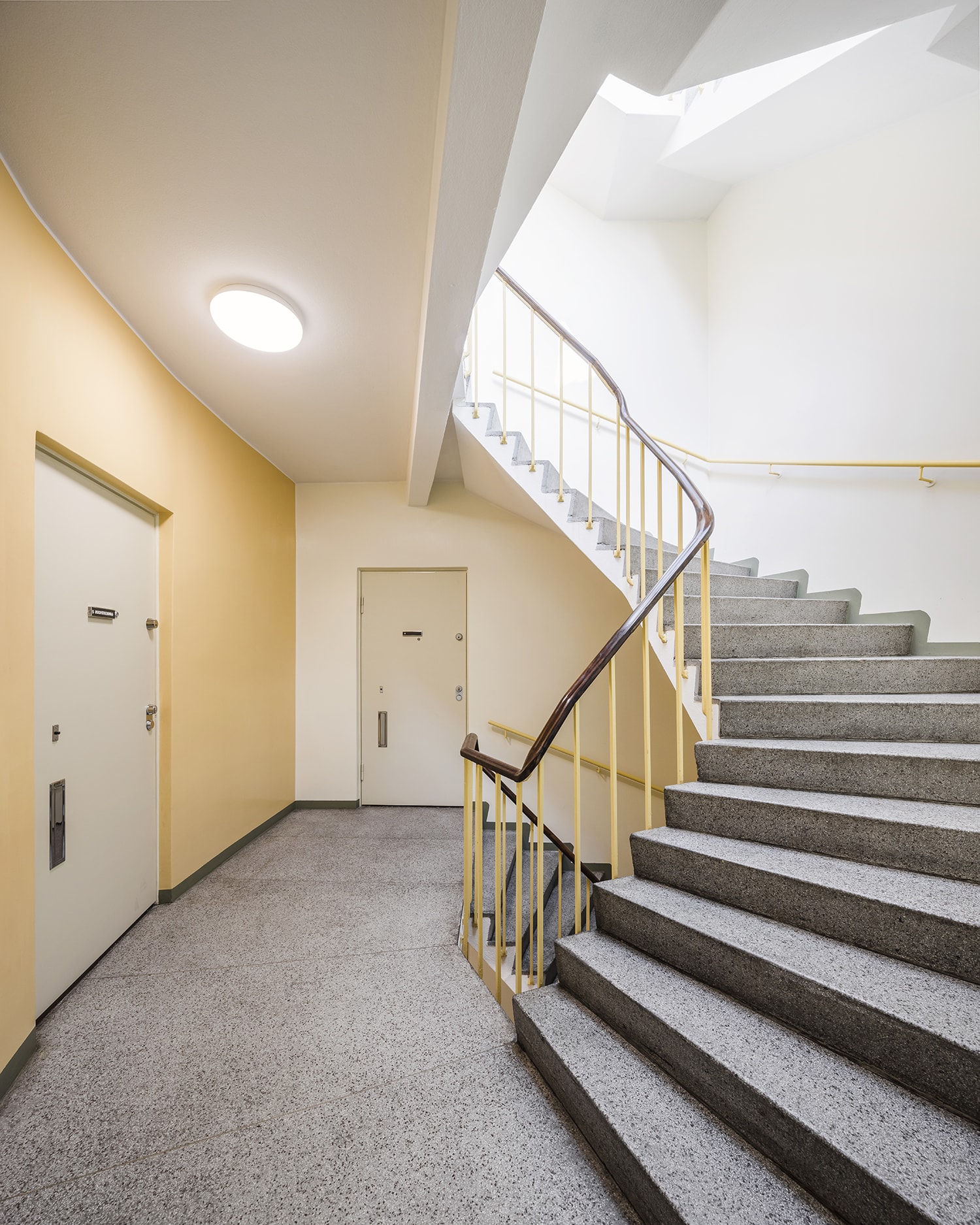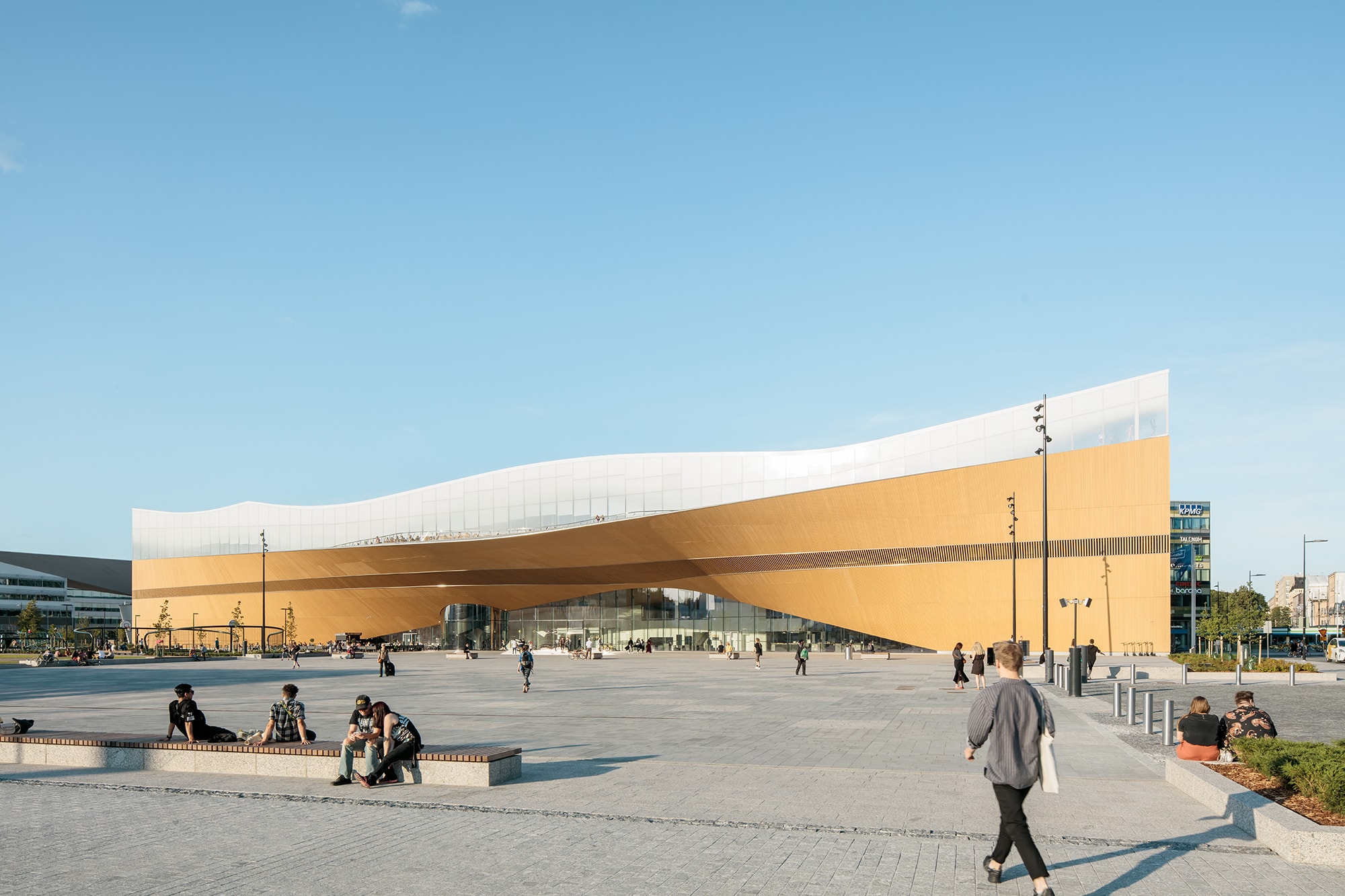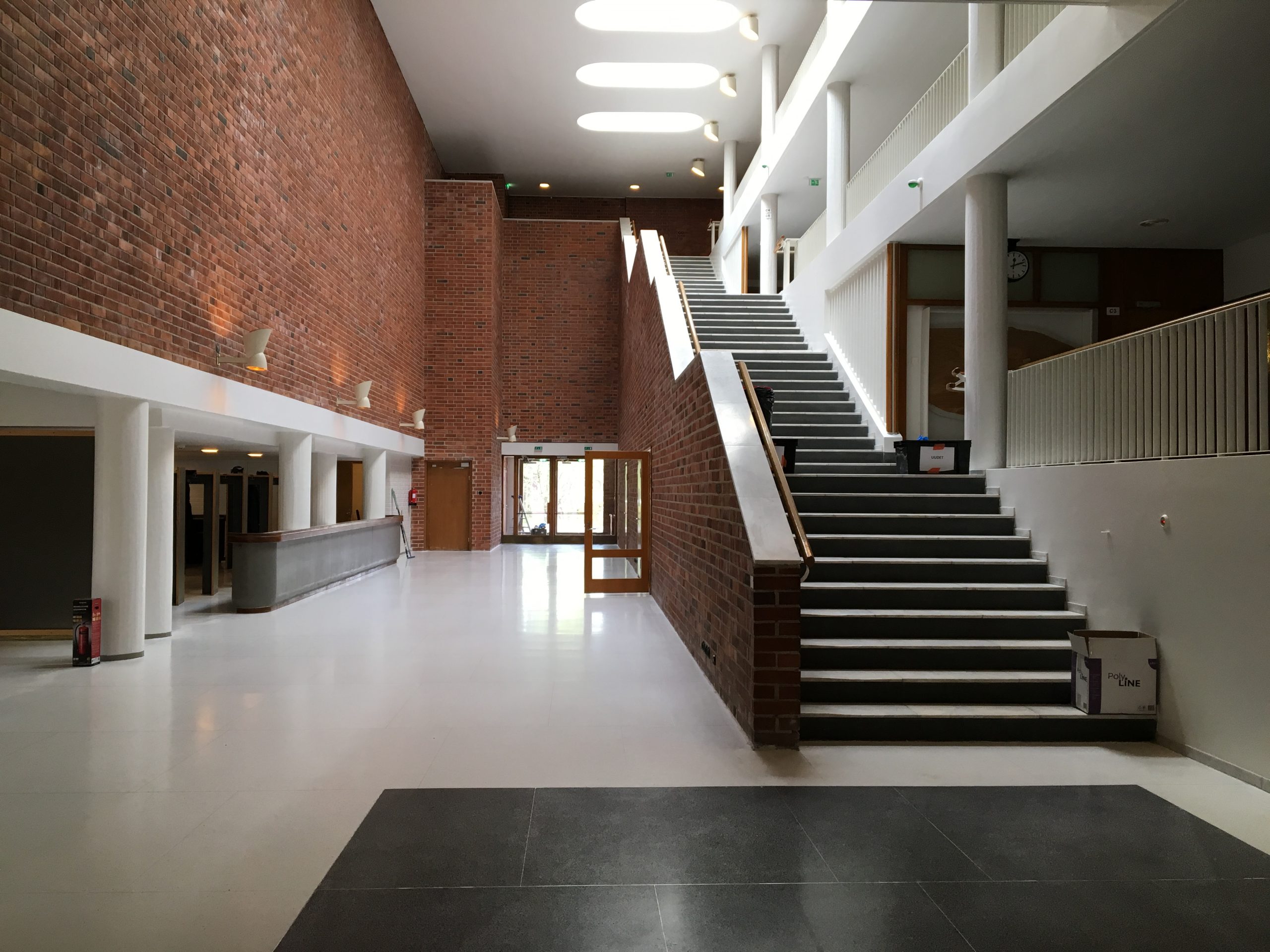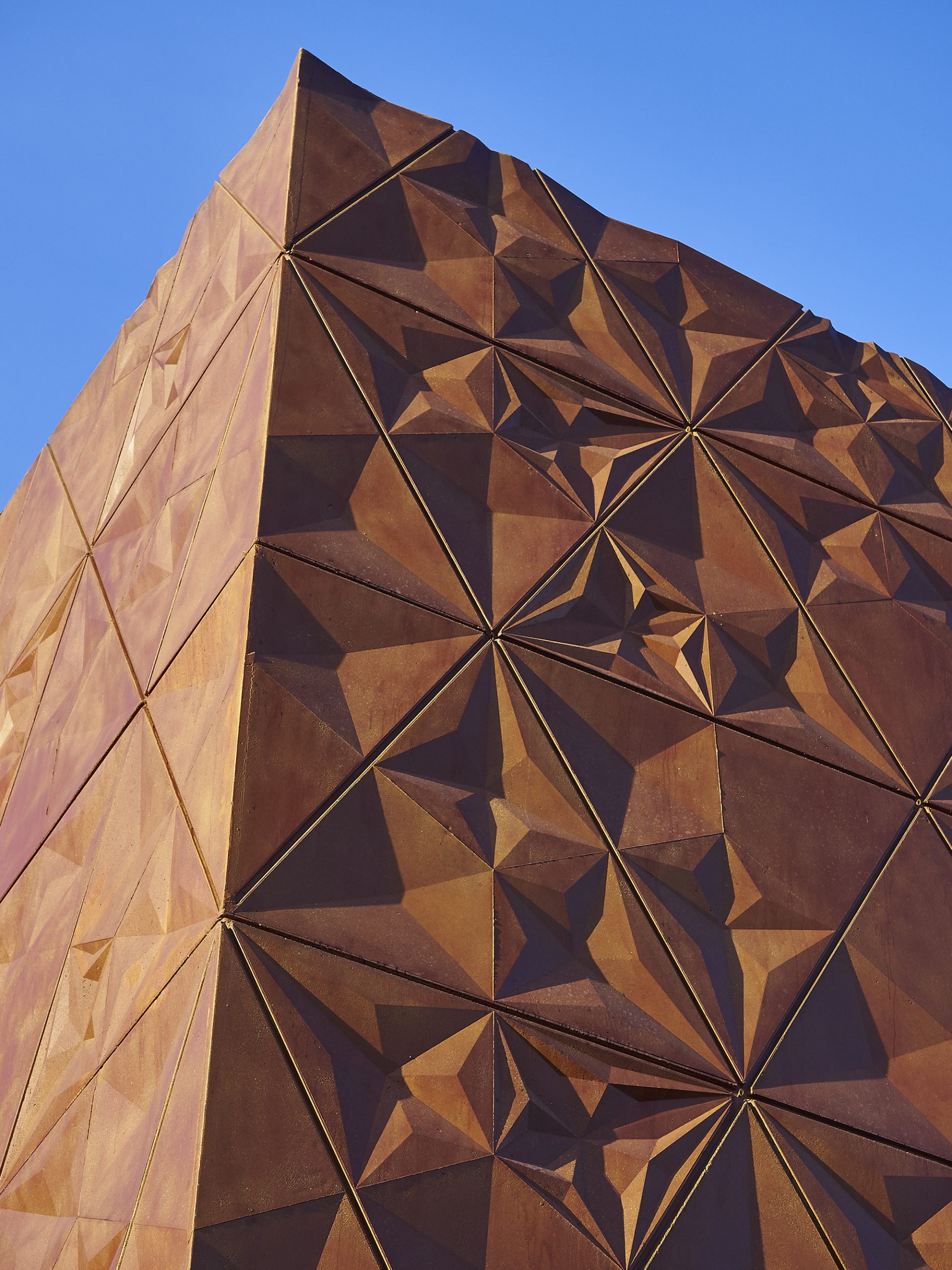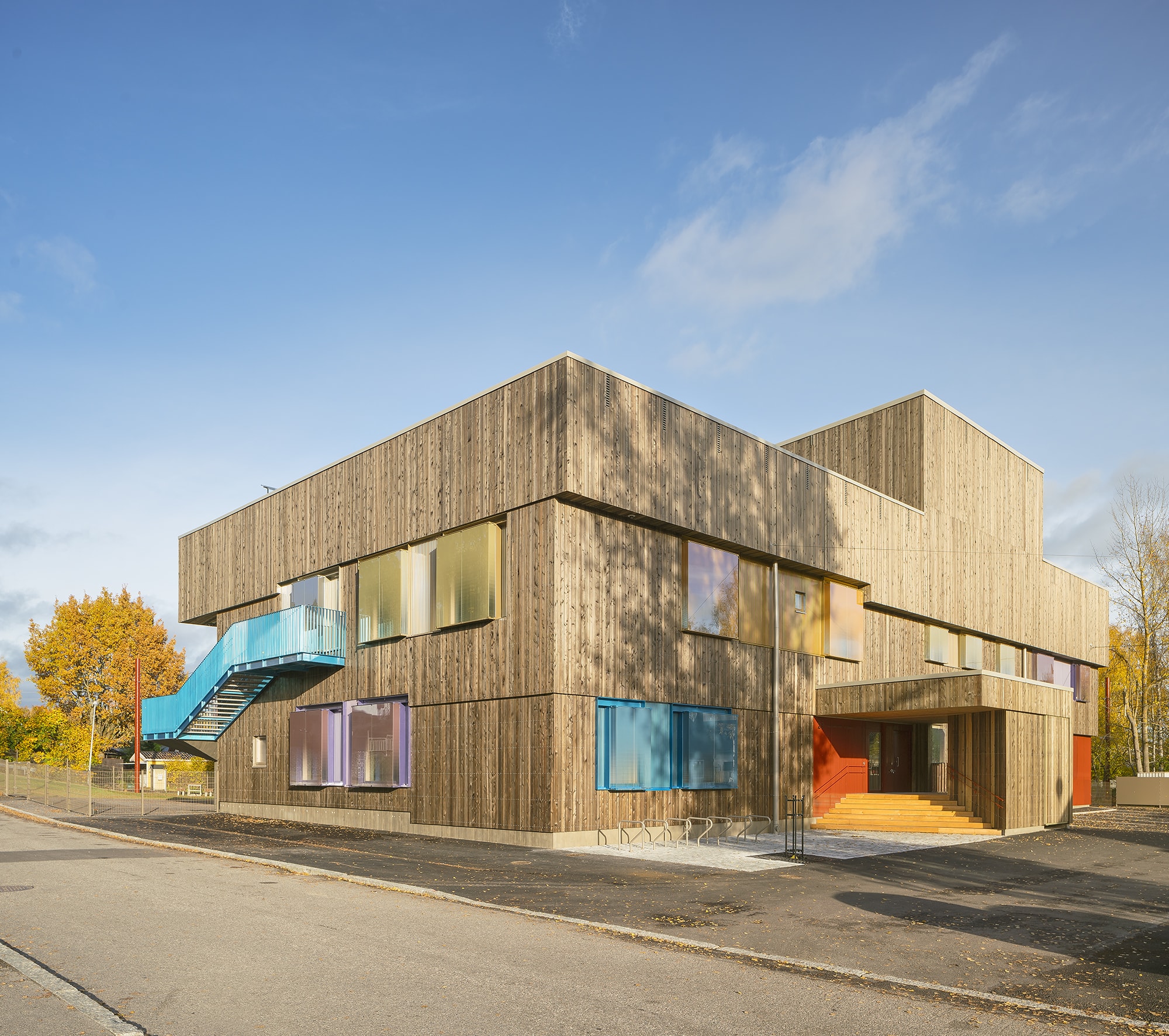The winner of Finlandia Prize 2019
Kuvakaruselli
Information
Architectural design
Kati Salonen ja Mona Schalin Arkkitehdit Oy / Mona Schalin, Marica Schalin, Varvara Protassova, Kristina Karlsson
Client
Helsingin kaupungin asunnot
Main contractor
YIT Suomi
Location
Helsinki, Finland
Programme
3 988 m²
Year of completion
2018
Kati Salonen ja Mona Schalin Arkkitehdit Oy
Principal design and architecture: Mona Schalin (pääsuunnittelija), Marica Schalin (projektiarkkitehti), Varvara Protassova, Kristina Karlsson
Colour design: Tiina Sonninen, Konservointi T.Sonninen Oy
Structural design: Timo Raiski, SitoWise Oy
HVAC design: Kari Virtanen, Insinööritoimisto Leo Maaskola Oy
Electrical design: Jarmo Jauhiainen, Yhtyneet Insinöörit Oy
Landscape architect: Riikka Ger, FCG Suunnittelu ja tekniikka Oy
In short
Serpentine House in the Käpylä district of Helsinki dates back to 1951 and is one of the most notable designs by Finnish architect Yrjö Lindegren. Comprising two distinct residential buildings, it extends across a total length of 287 metres. The refurbishment of the south building was carried out in 2016–2018 and the approach chosen by the project team departed significantly from the more conventional techniques commonly used on similar projects.
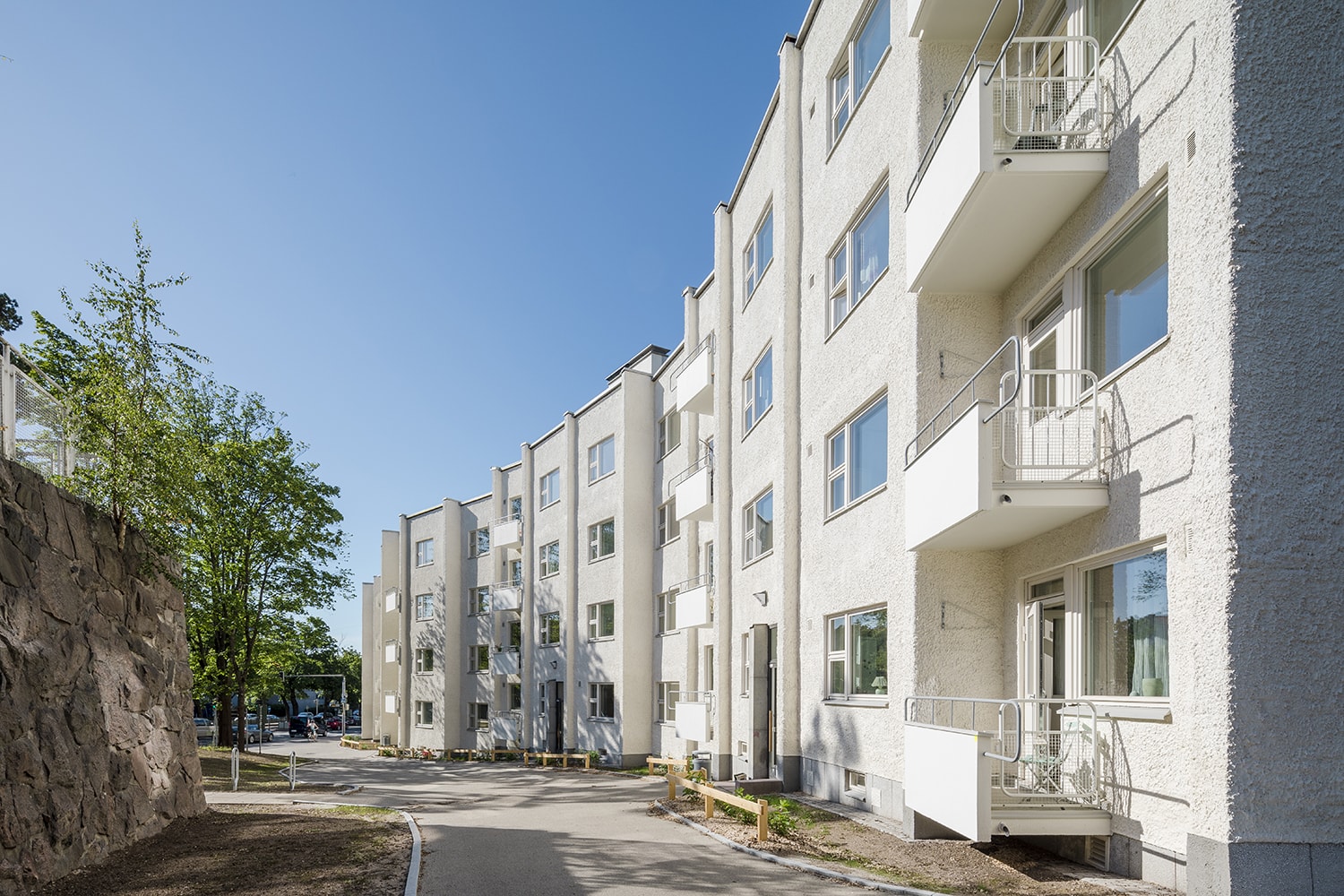
Kuvatoimisto Kuvio
Statement of the pre-selection jury
Serpentine House in the Käpylä district of Helsinki dates back to 1951 and is one of the most notable designs by Finnish architect Yrjö Lindegren. Comprising two distinct residential buildings, it extends across a total length of 287 metres. Despite the buildings’ angular shape, the design succeeds in avoiding a rigid and austere feel by setting the units that make up the buildings in a fan-like arrangement that creates a series of private and sheltered garden spaces for the residents. The complex, which curves its way along Mäkelänkatu, consists of a total of 189 rented properties owned by the City of Helsinki. Each of the properties has been designed as a distinct entity within the whole, providing residents with unique views of the surrounding area.
The refurbishment of the south building was carried out in 2016–2018 and the approach chosen by the project team departed significantly from the more conventional techniques commonly used on similar projects. The project comprised all bathrooms, kitchens and interior surfaces, as well as the building’s roof, external rendering, balconies, doors, windows, communal areas and HVAC systems. Despite the extensive scope, the works were carried out broadly in line with the building’s listed status. The majority of the windows were repaired, the kitchen fittings were refurbished and, significantly, the original natural ventilation system was retained. This energy efficient system will help to reduce maintenance costs and prevent indoor air quality problems in the future.
The developer and design team deserve praise for their ambitious and highly successful approach to conservation, while the staff at Helsinki City Museum and the city’s planning and building control departments should be recognised for their contribution to the project, including their expertise in allowing the original ventilation system to be retained.
The finalists of 2019
The finalists for the Finlandia Prize for Architecture 2019 were the Helsinki Central Library Oodi, the restoration of Jyväskylä University’s Main Building, the Kruunuvuorenranta Waste Transfer Terminal, Phase 1 of the Käärmetalo refurbishment project and the Vaaralanpuisto Day Care Centre in Vantaa.
